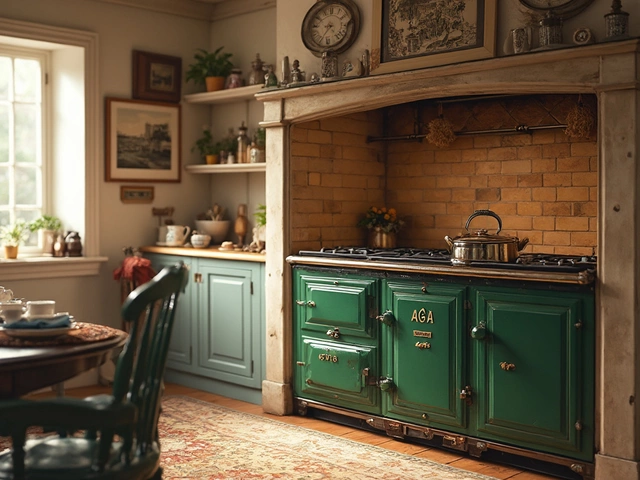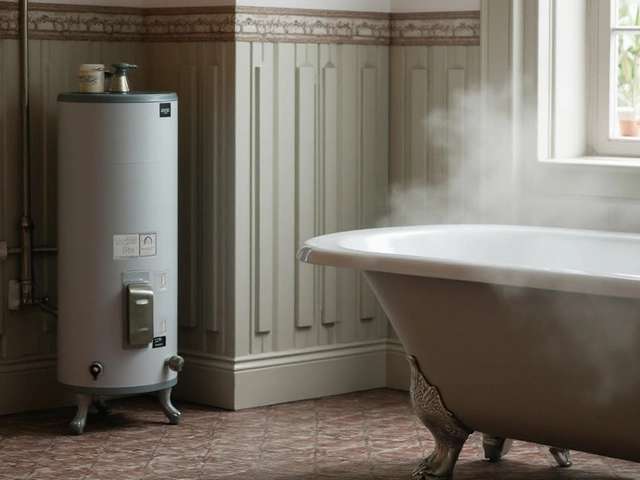If your electric oven feels like a freezer, you’re not alone. A cold oven can ruin dinner plans and leave you wondering if you need a costly engineer. The good news? Most heating problems are simple to diagnose and fix yourself, as long as you follow a few safety steps.
The most common culprit is a broken heating element. When the element burns out, the oven stays cool no matter which temperature you set. A faulty thermostat or temperature sensor can also send the wrong signal, so the element never turns on. Occasionally a tripped circuit breaker or a loose wire in the oven’s control board will cause the same symptom.
First, unplug the oven or switch off the circuit breaker. Safety is the top priority. Next, locate the heating element – it’s the long metal coil at the bottom or back of the oven cavity. Visually inspect it for discoloration, cracks, or a broken segment. If it looks okay, use a multimeter set to resistance (ohms). Touch the probes to the element’s terminals; a reading of 10‑30 ohms usually means it’s healthy. Anything outside that range indicates a bad element.
When the element is faulty, remove the two screws that hold it in place, disconnect the wiring harness, and pull it out. Slide the new element into the same slot, reconnect the harness, and tighten the screws. Most replacement elements cost between £30‑£60 and come with a simple install guide.
If the element checks out, move on to the thermostat or temperature sensor. These parts sit behind the oven’s rear panel. Again, test with a multimeter – the sensor should show a steady resistance that changes with temperature. A stuck‑low reading means the sensor needs swapping. Replacing a thermostat or sensor usually costs £20‑£40 and follows the same removal‑replace‑secure steps.
After any part swap, plug the oven back in and run a quick heat test. Set the oven to 180°C and watch the element glow within a few minutes. If it heats, you’ve solved the problem. If not, double‑check the wiring connections and make sure the circuit breaker didn’t trip during the test.
When DIY isn’t enough, call a qualified electrician or oven repair specialist. Some issues, like a damaged control board or internal wiring faults, require professional tools and certification. Attempting these fixes yourself can be dangerous and may void any warranty you have.
Cost‑wise, a basic element or sensor replacement is usually under £100, including parts and a few hours of labor if you do it yourself. A professional call‑out can run £80‑£120 plus parts, so weighing the price against the hassle helps you decide the best route.
In short, most electric oven heating failures stem from a burned‑out element, a bad sensor, or a simple electrical hiccup. With the right tools and a careful approach, you can troubleshoot, replace, and get back to baking in under an hour. Keep a multimeter, screwdriver, and a spare element on hand – you’ll thank yourself the next time the oven decides to stay cold.

Repairing an electric oven on your own can be daunting, but it may be easier than it seems. This article explores the basics of oven function, safety tips, and common issues like heating problems or broken knobs. You'll find valuable advice on identifying problems and learning when it's best to call a professional. With a bit of knowledge, some troubleshooting, and a few tools, you might be able to save money on repair costs. Remember to prioritize safety above all while attempting repairs.

Wondering how long a washing machine should actually last? This article breaks down real averages, points out what causes washers to wear out, and shows simple ways to get more years out of your machine. We’ll look at red flags for replacement, compare old versus new models, and clear up some common myths about washers. If you want your next laundry day to go smoothly—or you’re tired of surprise breakdowns—this guide’s for you.

A reliable heat pump is essential for maintaining comfort in your home. Some signs indicate that your heat pump might need replacing, such as increased energy bills, inconsistent temperatures, strange noises, old age, and frequent repairs. Understanding these warning signs can help you decide if it's time to invest in a new system.

Ever wondered how long your trusty range oven will last? On average, a well-maintained range oven can serve you for about 10 to 15 years. Routine cleaning and minor repairs can help extend its lifespan. Knowing when to repair or replace your oven is crucial for efficiency and safety. Read on for practical tips to make sure your oven lasts as long as possible.

This article delves into the debate between Rheem and AO Smith water heaters, two titans in the world of home appliances. It provides a comprehensive comparison, exploring key aspects like energy efficiency, durability, and cost-effectiveness. It also highlights some interesting facts and practical tips to help you choose the right water heater for your needs. Whether you're looking to upgrade your system or repair your current unit, this guide aims to provide valuable insights.

Discover how long extractor fans last, what shortens their life, and tips to maximize their lifespan in your kitchen or bathroom. Practical, clear advice from real experience.